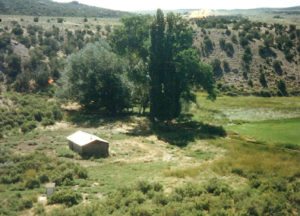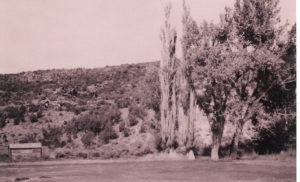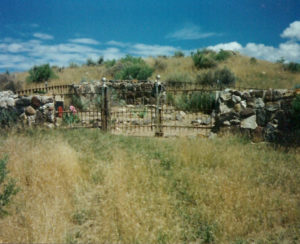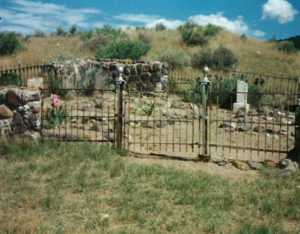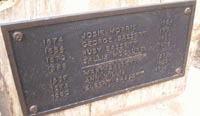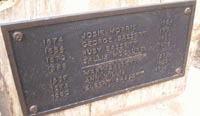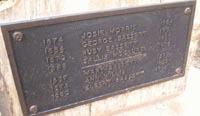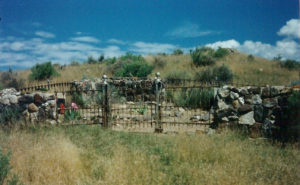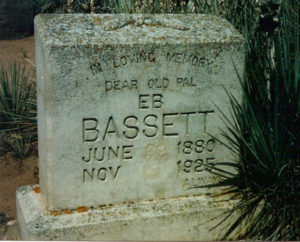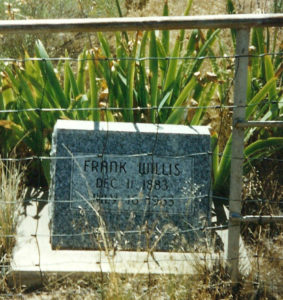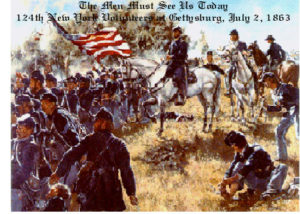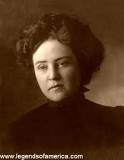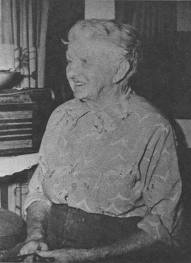According to the generally accepted story, Butch Cassidy and the Sundance Kid died in a hail of gunfire after robbing a bank in Bolivia, South America; they were buried there.
The fact is, though, that there are numerous accounts of those who knew Butch that he survived Boliva, returned home, and finished his life as a businessman, though no one knows under what name he lived. I have numerous sources, but the two best sources are his former lover, Josie Bassett, and his sister, Lula Parker Betenson. Josie’s account can be read here (one has to go a bit down to read the part about Butch)…and Lula published a book, “Butch Cassidy, My Brother,” which can be bought on Amazon or borrowed from a library.
It is an established fact that Butch tried to get amnesty for his crimes; he never hurt anyone, but was a train and bank robber, and had amassed quite a bit of money…the amnesty attempt fell through, and this is one of the main reasons that Butch and Sundance decided to take a long siesta in South America to get away from the Pinkerton detectives….here is an account from Lula Betenson’s book, of Butch Cassidy’s return home, which I thought would be interesting; note that his real name was Robert Leroy Parker, which is why he is referred to as Bob, or Leroy. Here is chapter 15, from Lula’s book, describing Butch’s return:
After Mother’s death in 1905, Father lived in the brick house in town with his six unmarried children. Since I was the eldest daughter living at home, it was my responsibility to try to keep things together. I am the only one of the girls who stayed in Circleville, and I remained very close to Dad and my brothers.
On New Year’s Eve, 1907, I married Joseph Betenson, and we lived in Circleville, where five children were born to us: Pauline, Scott, Mark, John, and Barbara.
Most of the time my brothers were out on the range with the livestock, spending the summers on the mountain and the winters at home, feeding cattle and horses at the ranch south of Circleville. My brothers worked elsewhere as time permitted, but they helped Dad at the ranch also. They had always raised good horses, cattle, and sheep, but were only moderate stockmen.
One day, Jim Gass, a Circleville neighbor, came home from a trip to California and told me he had seen Bob getting on a train in Los Angeles. He and Bob waved to each other, but the train pulled out before they could speak to each other.
Jim had been a close friend of Bob’s when they were boys. He told me of an incident when he and Bob were in the hills together, and a deer jumped out and refused to run away. They rode back and discovered a fawn lying on the ground, pinned down by a log that had rolled onto its leg. Jim said, “We’d better shoot it to get it out of its misery.”
But Bob said, “No, we’ll fix that leg.” They dismounted, and Bob took a buckskin string, splinted the leg, tied the string, and turned the fawn loose. A master with knots, Bob did this so skillfully that, as the leg healed, the movements of the deer would wear it off. Jim had always said, “Bob couldn’t kill a dog, let alone a man.”
Jim also told me that Bob was a true conservationist. He said that in the fall of the year Bob always filled his pockets with seeds of wildflowers, and as he rode along on his horse, he scattered the seeds in barren places along the road or trail.
As we pursued our very ordinary lives, occasionally a rumor reached us that Butch Cassidy was still alive and had been seen in various localities. Dad seemed so sure that he was still living. We wondered how much he really knew. But if Butch ever communicated with Dad, we didn’t know it.
Dad, eighty-one, was sitting on the step by the kitchen door of the brick house, enjoying the shade and the late afternoon calm. His hair was white, and he wore a thick white mustache. He was a fine-looking man, straight and alert, and, as always, dressed immaculately. The flashy car drove into the yard, and Mark stepped out. Dad was surprised. That morning Mark had left on horseback, headed for the ranch. Rather slowly the driver slipped out on the left side of the car and straightened up. At first Dad wondered who it was.
Bob’s face for once was solemn; perhaps he wondered how he would be accepted. The screen door to the kitchen was open behind Dad’s back. Bob took off his hat and twirled it through the door. It landed squarely on the post of the rocking chair inside. Then he grinned that unmistakable grin. Dad knew him. No one could ever describe that meeting after all the years of uncertainty and separation—forty-one years. That reunion proved the strength of Dad’s heart; he survived it.
Minutes later my brother Mark appeared at my kitchen door and said, “Lula, we’ve got company. Dad wants you to come down and fix supper.”
That wasn’t the first time I had been asked to leave my family and prepare supper for Dad and the boys. Pauline was old enough to take care of our children, but John, the baby at that time, sat up a howl to go along.
Jose went with me to Dad’s. In clean dishtowels I wrapped two loaves of warm bread and a fresh bullberry pie that I had just taken from the oven, and we walked over to Dad’s. We walked in the front gate and around to the kitchen door. I glanced at the unfamiliar car and wondered who it was this time. As we stepped into the kitchen, put down the food, and went on into the living room, the conversation stopped. The stranger stood up as I stepped into the room, and I studied his face in the awkward silence. He wasn’t a stranger, not really, and yet he was. Why did he look so familiar?
Dad smiled. “I’ll bet you don’t know who this is.” I was puzzled. By his features, he had to be family. “Lula, this is LeRoy!” Dad announced.
Continue reading →

